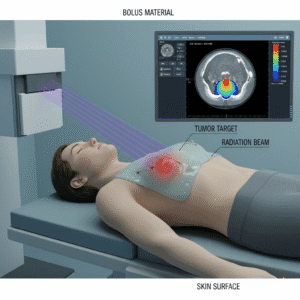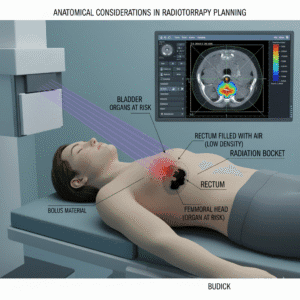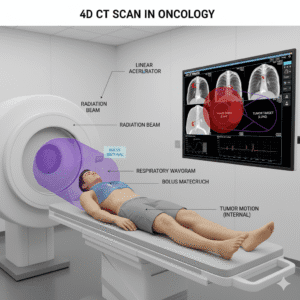
Cancer Info
Urinary Bladder Cancers
What is the incidence of urinary cancers in India?
Urinary cancers, particularly bladder cancer, are increasingly recognized in India. Bladder cancer is the ninth most common cancer in India, with higher rates observed in urban areas. Factors such as tobacco use, industrial exposure, and certain infections (like schistosomiasis) contribute to the incidence. Awareness and early detection are vital to improving outcomes.
What are the risk factors for urinary cancers?
Smoking: The most significant risk factor, increasing the chance of bladder cancer significantly.
Chemical Exposure: Contact with certain chemicals, such as those used in the dye industry, can elevate risk.
Chronic Inflammation: Conditions like chronic cystitis or bladder infections can increase the likelihood of cancer.
Age and Gender: Men are more likely to develop bladder cancer, and risk increases with age.
Family History: A family history of bladder cancer can raise individual risk.
How is urinary cancer screened for?
Screening for urinary cancer typically involves urine tests and imaging studies. Urinalysis can detect blood (hematuria) or cancer cells. If abnormalities are found, cystoscopy, a procedure where a thin tube with a camera is inserted into the bladder, may be performed to visualize the bladder lining and obtain tissue samples for biopsy.
What are the signs and symptoms of urinary cancers?
Common signs and symptoms include:
Blood in Urine: One of the most prominent symptoms, which may be visible (gross hematuria) or detected during testing.
Frequent Urination: An increased urge to urinate, often accompanied by pain or burning.
Pelvic Pain: Discomfort in the pelvic region may occur.
Unexplained Weight Loss: A significant drop in weight without a known cause.
Fatigue: Persistent tiredness or weakness.
How do smoking and alcohol affect urinary cancer risk?
Smoking is a major risk factor for bladder cancer, with smokers being four times more likely to develop the disease than non-smokers. Alcohol consumption, while less directly linked to bladder cancer, may contribute to overall cancer risk, especially when combined with smoking. Quitting smoking and moderating alcohol intake are crucial for reducing risk.
What investigations are done to diagnose urinary cancers?
Diagnosis may involve:
Urine Tests: To check for blood, cancer cells, and biomarkers.
Imaging Studies: CT scans or MRIs help visualize the urinary tract and detect tumors.
Cystoscopy: Direct visualization of the bladder and obtaining tissue samples through a biopsy for definitive diagnosis.
What is stage-wise management for urinary cancers?
Management depends on the cancer stage:
Stage 0 (Carcinoma in situ): Treated with intravesical therapies like BCG (bacillus Calmette-Guérin).
Stage I: Often treated with transurethral resection of the bladder tumor (TURBT) and may include intravesical therapy.
Stage II: May require TURBT followed by radical cystectomy (removal of the bladder) and possible chemotherapy.
Stage III: Typically involves radical cystectomy and chemotherapy, sometimes followed by radiation.
Stage IV: Treatment often includes chemotherapy, immunotherapy, or palliative
What is intravesicular BCG therapy?
Intravesicular BCG is a treatment for superficial bladder cancer. It involves instilling the BCG vaccine directly into the bladder, stimulating the immune system to attack cancer cells. This therapy is particularly effective for high-risk non-muscle invasive bladder cancer and helps reduce recurrence rates.
What are molecular tests, and why are they important?
Molecular tests analyze the genetic and molecular characteristics of the cancer. These tests can identify specific mutations or biomarkers that may influence treatment decisions, such as targeted therapies. For example, the presence of specific genes may indicate a better response to certain medications, allowing for personalized treatment plans.
What is targeted therapy, and how does it work?
Targeted therapy uses drugs that specifically attack cancer cells based on their genetic makeup. In urinary cancers, targeted therapies may focus on specific mutations or pathways involved in cancer growth. This approach often results in fewer side effects compared to traditional chemotherapy, as it aims to spare normal cells.
What role does chemotherapy play in treating urinary cancers?
Chemotherapy is typically used for advanced bladder cancer or when the disease has spread. It involves using powerful drugs to kill rapidly dividing cancer cells throughout the body. Common regimens may include a combination of cisplatin and gemcitabine. Side effects can include nausea, fatigue, hair loss, and an increased risk of infections.
How does immunotherapy work for urinary cancers?
Immunotherapy enhances the body’s immune response to fight cancer. For bladder cancer, immune checkpoint inhibitors (such as pembrolizumab or atezolizumab) block proteins that prevent the immune system from attacking cancer cells. This approach can be effective for advanced bladder cancer and may provide a more durable response compared to traditional treatments.
What is the role of radiotherapy in treating urinary cancers?
Radiotherapy uses high-energy rays to target cancer cells and can be used in various contexts:
Curative Intent: For localized tumors, often in combination with surgery.
Palliative Care: To relieve symptoms like pain in advanced cancer cases.
Side effects may include fatigue, skin irritation, and urinary changes.
What is CyberKnife radiosurgery, and what are its benefits?
CyberKnife is a form of stereotactic radiosurgery that delivers high doses of radiation precisely to tumors. Benefits include:
Non-Invasive: No need for surgical incisions.
Precision Targeting: Real-time imaging allows for accurate targeting of tumors while sparing surrounding healthy tissue.
Short Treatment Course: Typically completed in a few sessions.
Minimal Side Effects: Fewer side effects compared to traditional radiation therapy.
What can I expect during follow-up appointments?
Follow-up appointments are essential for monitoring recovery and detecting any recurrence. During these visits, your healthcare provider will review imaging results, perform urine tests, and discuss any new symptoms. The frequency of follow-ups may decrease over time but generally continues for several years after treatment to ensure ongoing health and early detection of any issues.
How can exercise and rehabilitation help in cancer care ?
Regular physical activity can improve overall health, enhance recovery, and help manage treatment side effects. It’s essential to tailor exercise programs to individual capabilities. Rehabilitation services, including physical therapy and counseling, can support recovery and address any functional issues post-treatment.
What should I eat and avoid ?
A balanced diet rich in fruits, vegetables, whole grains, and lean proteins can support recovery and overall health. Consulting a nutritionist can help tailor dietary recommendations.
Will the treatment affect my sexual function and fertility?
Urinary cancers and their treatments can affect sexual function and
fertility. Discussing these concerns with a healthcare provider can
help address issues and explore options like sperm banking before
treatment. Couples may need to discuss family planning options, especially if
fertility is affected by treatment. Various methods, including
assisted reproductive technologies, may be considered.



